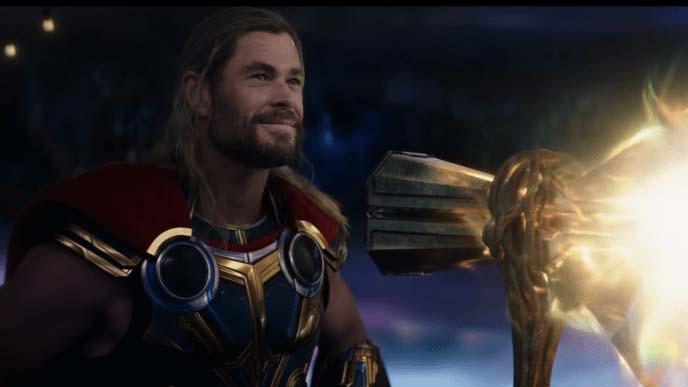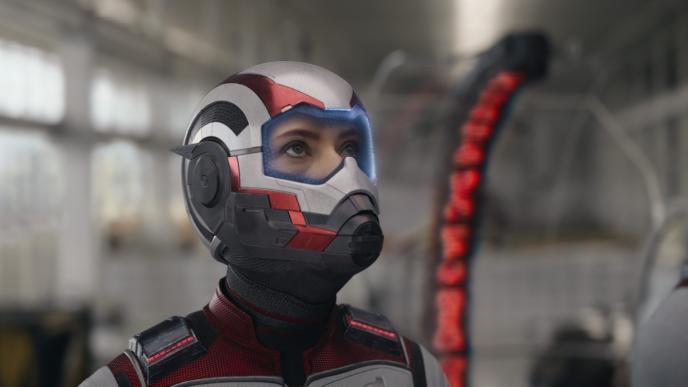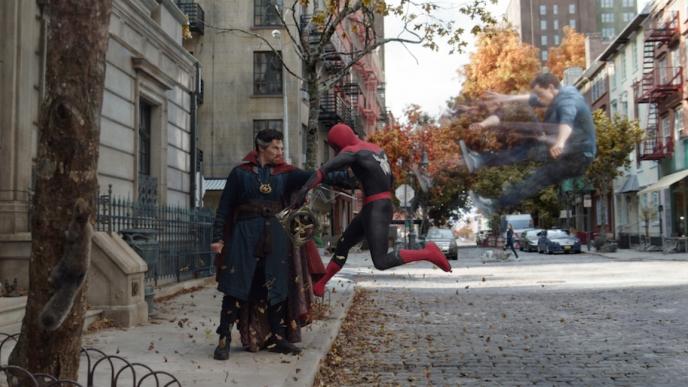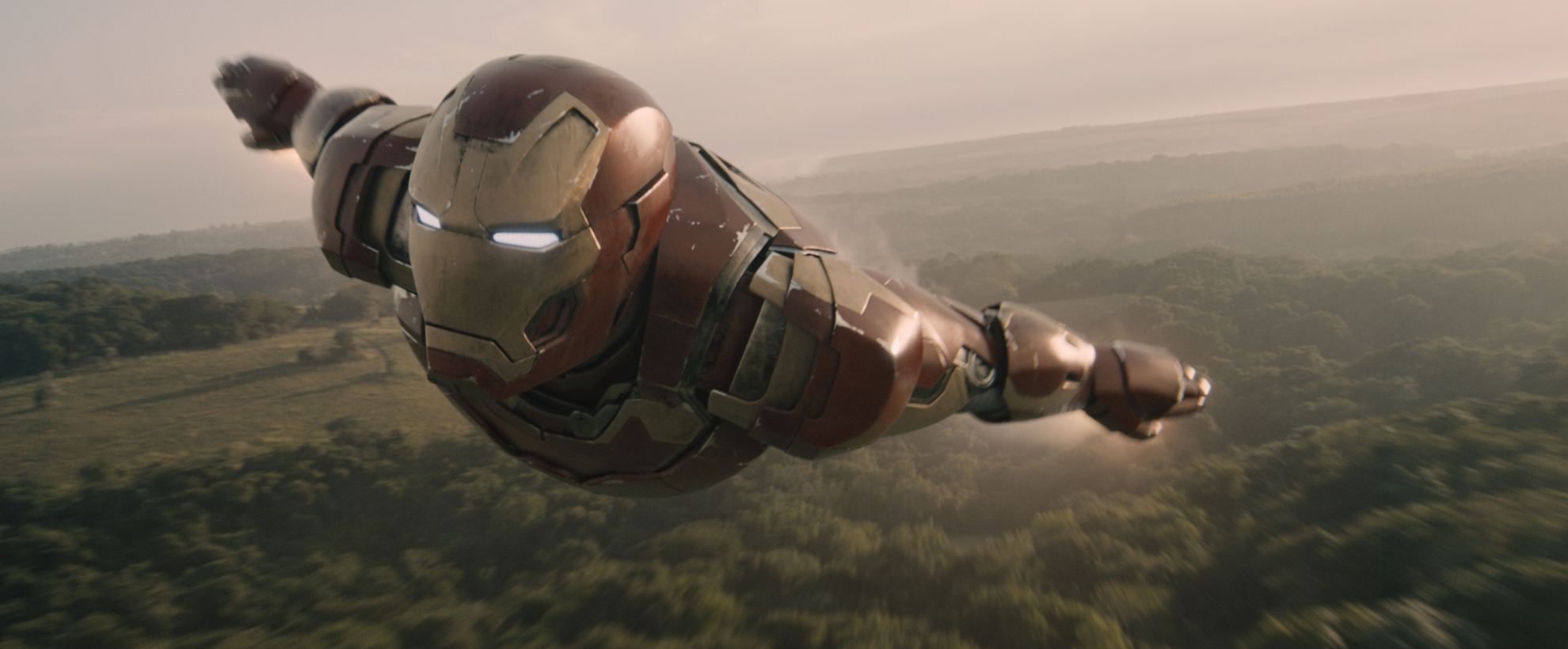
Avengers: Age of Ultron
Old friends re-unite to face a new enemy in the follow-up to the Marvel’s record-breaking Avengers film. Excitingly, Framestore had the huge responsibility of creating new character Vision for the Marvel Cinematic Universe, delivering over 120 shots for the film.
Key sequences also included the much-loved Iron Man and Hawkeye characters. Having worked on previous Iron Man movies Framestore were able to use a raft of existing assets to inform the project.
Working with Marvel is always great fun - having worked with them a few times now, I think they know that Framestore can deliver the quality they want.
Creating Vision
Created by Ultron using Stark technology, Vision is a key character in the story, with his powers proving a match for any one of our heroes. Played by Paul Bettany, the character had to be built from scratch, with a ‘cradle’ housing the character as he’s developed. The team designed a light cage with a 3D blue-print, building up skeletal structures, muscle fibres and liquid matter to portray the different stages of Vision’s development. As he grows stronger, the liquid matter transitions into a biomechanical look, before the character is finally revealed in an epic birthing scene. Using the in-house Flesh and Flex tool, Framestore built fully simulated muscle and skin systems to depict Vision’s naked body, as well as the supercritical gas that drips off him as he makes his entrance. “We’d been developing this system for some time but this was the first show in which it was deployed” explained VFX Supervisor Nigel Denton-Howes.
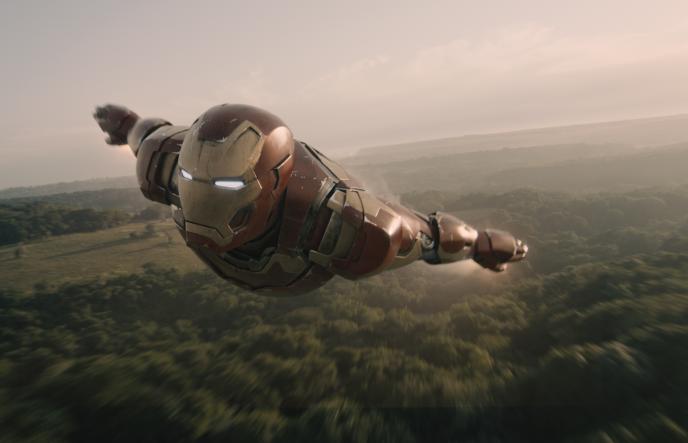
Iron Man's Suit
Framestore also worked on key Iron Man sequences drawing on existing assets and experience of dealing with the iconic suit from previous films. One of these main scenes features Iron Man flying into a bunker where he shatters glass, breaks stone pillars, and faces gun-fire. The crew developed custom 3D tools in Nuke to create dust, missile trails and other creative touches.
In the most challenging shot we see Tony Stark stepping out of the Iron Man suit and leaving it on sentry mode as he explores the bunker. The suit was created entirely in CG, with a complex rigging system adapted to move specific parts in tandem, as well as individually. “We were able to give ourselves an amazing amount of control over how the suit moved and opened up. We were quite specific with certain sections of the suit, with individual movements taking hours to perfect” said Denton-Howes. Tony Stark then instructs the empty suit to scan the bunker; to create this effect Framestore utilised the LADAR data captured on-set to create a 2D comp treatment of the room plan. This was then reinforced and refined in Nuke, with laser effects added to complete the shot.
Healing Hawkeye
Having been effectively brainwashed for much of the previous Avengers film, this time round Hawkeye is heavily involved in the fighting, receiving a traumatic rib cage injury for good measure. Framestore were responsible for creating the wound and the healing process conducted by Dr. Cho.
“In the plate footage there was just a hole in Jeremy Renner’s suit, which we filled in with a pretty grotesque matte painting” Nigel said. “We then created the regenerative, healing process seen back at lab - Dr. Cho’s technology is actually stolen by Ultron and used to create Vision later on in the film, so we made sure there were some visible similarities between the two”. Blending a mix of metallic and skin tone particles, the 3D department were able to create an organic spray to cover the wound. This was then built up and solidified by lasers, created in 2D, whilst different layers of matte painting were brought in to show the gradual healing process. Framestore were also responsible for the strapping and gauze on the wound, with the source footage featuring none of this.
Modelling the Internet
A further scene Framestore tackled takes place in the massive complex that is essentially the Hub of the internet. Using a reference of the warehouse in Indiana Jones, the modelling department built up the small set captured from the base plate to create an endless network of computer servers, cables and electrical hardware. “It was important that the set didn’t look too clean or clinical - we wanted to created something that was awe-inspiring and interesting to look at, so lighting definitely played a big role in the sequence” added Nigel.


